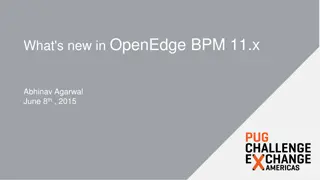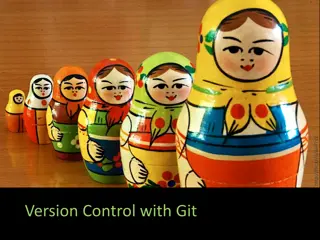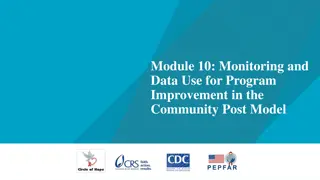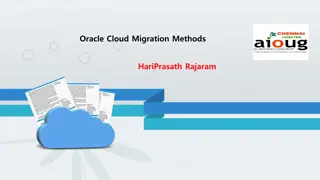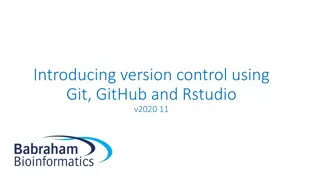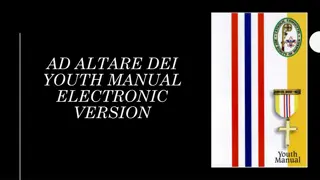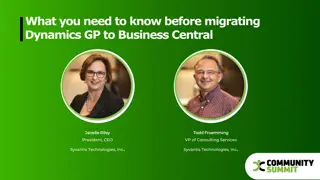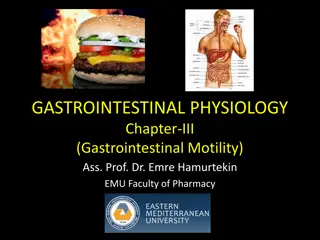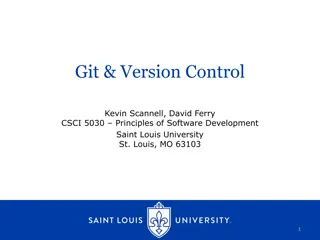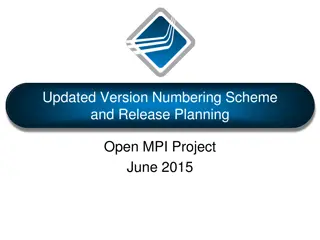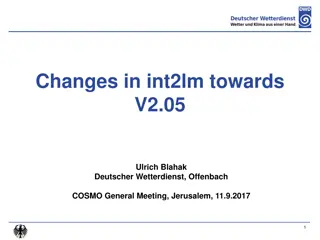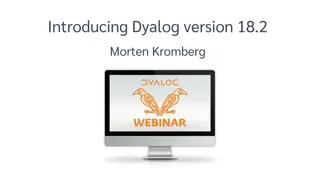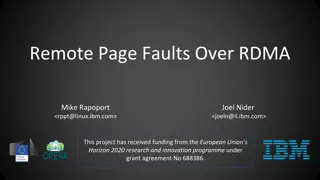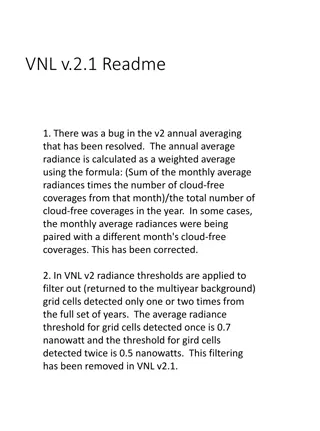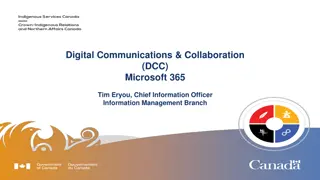Key Considerations for Migrating to PSSE Version 35
Upgrading to PSSE Version 35 from v34 is crucial as the current version will soon reach its end of life. The migration offers significant advantages such as performance improvements, key feature additions, and program corrections. This transition ensures stability, compliance with industry standards, and access to enhanced modules for better system analysis and management.
Download Presentation

Please find below an Image/Link to download the presentation.
The content on the website is provided AS IS for your information and personal use only. It may not be sold, licensed, or shared on other websites without obtaining consent from the author.If you encounter any issues during the download, it is possible that the publisher has removed the file from their server.
You are allowed to download the files provided on this website for personal or commercial use, subject to the condition that they are used lawfully. All files are the property of their respective owners.
The content on the website is provided AS IS for your information and personal use only. It may not be sold, licensed, or shared on other websites without obtaining consent from the author.
E N D
Presentation Transcript
M A Y 1 7 , 2 0 2 2 | N E P O O L R E L I A B I L I T Y C O M M I T T E E | D O U B L E T R E E H O T E L , W E S T B O R O U G H , M A Discussion: Upcoming Migration to PSSE v35 Key Considerations Anish Joshi P R I N C I P A L E N G I N E E R , M O D E L A D M I N I S T R A T I O N A N D S U P P O R T ISO-NE PUBLIC
Background Power System Simulator for Engineering (PSSE) is widely used throughout the Eastern Interconnection (EI) for stability analysis: Planning studies, such as system impact studies to demonstrate no-adverse-impact for Proposed Plan Applications Operating limit studies Studies to demonstrate compliance with NERC, NPCC & ISO standards The Multiregional Modeling Working Group (MMWG) is responsible for building annual steady state and stability case libraries on an EI wide basis: Requires considerable coordination across entities that provide/maintain models in the EI The MMWG engages in year round coordination to build and release model libraries The PSSE version used for each yearly case build is decided by the MMWG MMWG will be migrating from PSSE version 34 (v34) to PSSE version 35 (v35) for the 2023 case build cycle ISO-NE PUBLIC 2
Why Migrate to PSSE Version 35? v34 is seven years old and is about to be phased out Siemens PTI (Vendor) has informed us that v34 will reach its end of life in April 2023 as they shift their focus to future versions They will not be issuing any more updates for v34 from that point on, including security patches v35 was released in October 2019 Since then Siemens PTI has addressed several program bugs and deficiencies It is typical for the industry to wait a couple of years before migrating to the latest version to ensure stable operation ISO-NE PUBLIC 3
Advantages of Migrating to PSSE Version 35 64 bit application this will provide performance improvements in general over the 32 bit version Key feature additions, including: Support for modeling of multiple switched shunts at a bus Machine capability curve data is now preserved in the SAV and RAW files An extensible RAW file is now supported (RAWX) Improvements to the newer modules, including: Geomagnetically Induced Currents (GIC) module Node-Breaker module 40+ PSSE Library User models converted to PSSE Library Standard models Several key program corrections ISO-NE PUBLIC 4
Who is Affected/What is Required? Updating generation and transmission equipment that is represented by user models requires significant attention during PSSE migrations: ISO will reach out to transmission and generation model owners for this equipment to request submittal of models that are compatible with newer versions of PSSE Required under Operating Procedure 14 ISO will verify that any user models developed for new versions of PSSE perform appropriately: Ensure no initialization or runtime issues Verify that model performance matches the performance of models used for older versions of PSSE ISO-NE PUBLIC 5
Who is Affected/What is Required? Generation and Transmission model owners who use user models should consider migrating to standard models: Standard models are significantly easier to manage than user models For standard models, migration requires little to no effort for model owners for all future PSSE releases Generation and transmission model owners offload the burden of the model management process to Siemens PTI Siemens PTI maintains the standard model library Eliminates the need to depend on manufacturer model developers PSSE version migrations will continue in the future Note: Sometimes updates to standard model parameters may be needed from transmission and generation model owners to capture newly available modeling features (for example, updates to governor models that allow the modeling of dead band parameters) ISO-NE PUBLIC 6
Lessons Learned from Prior Migration The MMWG PSSE v34 migration a few years back went relatively well for standard models, but: We still could not get all the user models converted in time for the MMWG build (late summer to early fall each year) This resulted in ISO-NE having to issue exceptions for provisionally netting a few generator models in the MMWG library We are still experiencing some problems with some v34 user models Given the time needed to convert, revise, test and benchmark models during a PSSE version migration, it is important for transmission and generation model owners to begin this work as soon as notified ISO-NE PUBLIC 7
Next Steps In order to be adequately prepared for the MMWG 2023 case development cycle and all subsequent study work: ISO will reach out to transmission and generation equipment model owners to request implementation of the model migrations Model submissions will be due within 90 days of the formal request ISO outreach to transmission and generation equipment model owners expected to occur with the same contacts used for the annual compliance model certification process ISO-NE PUBLIC 8
Next Steps (continued) If PSS/e standard library models on file with ISO-NE are used to model the equipment you represent, then you are only responsible for ensuring the .dyr is correctly formatted for PSSE v35. Most models of this type require little to no modification If a user model with an associated .dll on file with ISO-NE is used to model the generators you represent, then you are responsible for either: Moving any user model to a v35 PSSE standard library model and certifying it correctly represents the equipment being modeled, and/or Recompiling any retained user models for use in PSSE v35 and providing a thorough study to show the model adequately benchmarks against the current certified and approved model ISO-NE has on file ISO-NE PUBLIC 9




